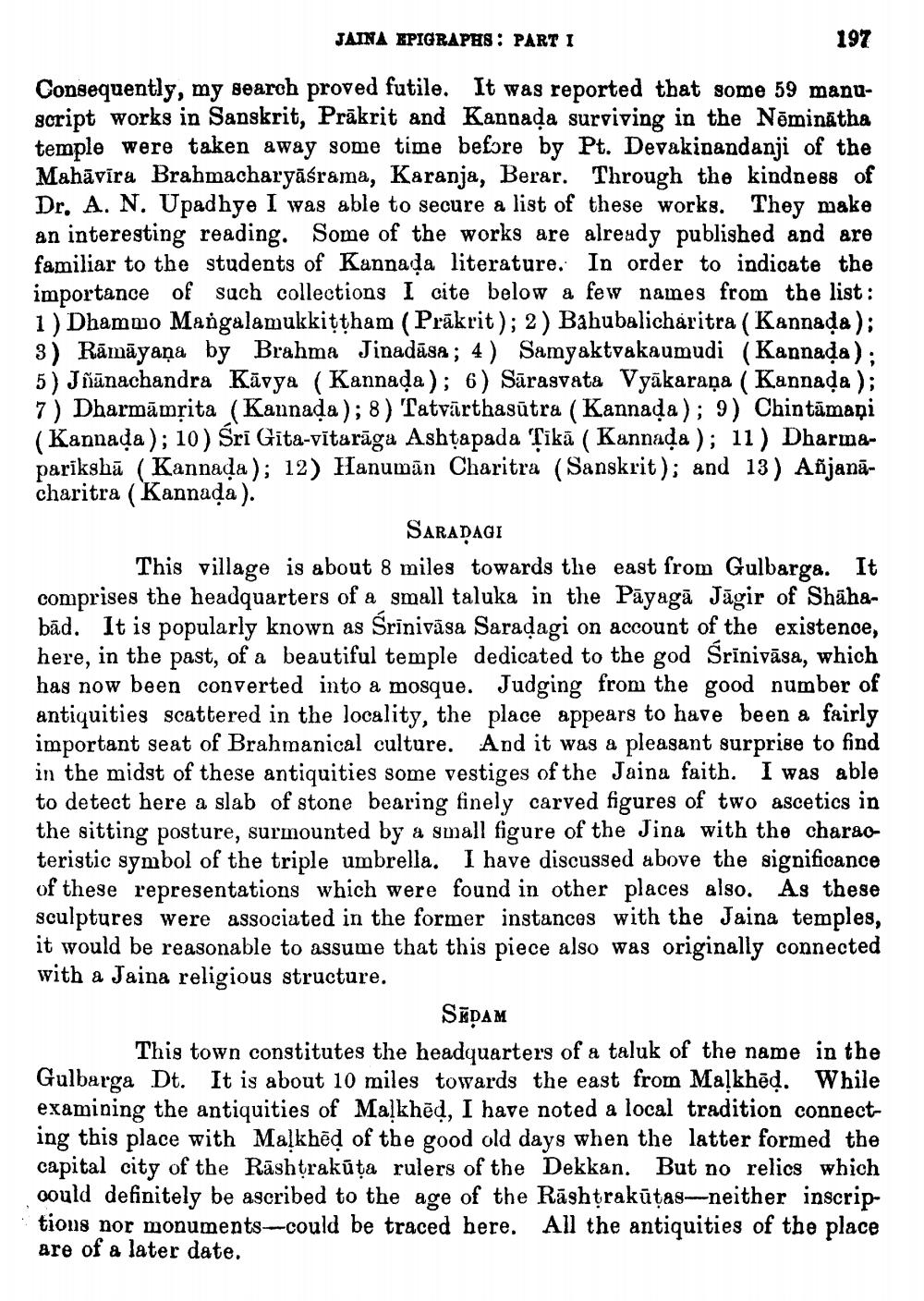________________
JAINA EPIGRAPHS : PART I
197
Consequently, my search proved futile. It was reported that some 59 manuscript works in Sanskrit, Prākrit and Kannada surviving in the Nēminātha temple were taken away some time before by Pt. Devakinandanji of the Mahāvira Brahmacharyāśrama, Karanja, Berar. Through the kindness of Dr. A. N. Upadhye I was able to secure a list of these works. They make an interesting reading. Some of the works are already published and are familiar to the students of Kannada literature. In order to indicate the importance of such collections I cite below a few names from the list : 1) Dhammo Mangalamukkiţtham (Prākrit); 2) Bahubalicharitra (Kannada); 3) Rāmāyaṇa by Brahma Jinadāsa; 4) Samyaktvakaumudi (Kannada); 5) Jñūnachandra Kāvya (Kannada); 6) Sārasvata Vyākaraṇa ( Kannada ); 7) Dharmāmțita (Kannada); 8) Tatvārthasūtra (Kannada); 9) Chintāmaņi (Kannada); 10) Sri Gita-vītarāga Ashtapada sikā (Kannada); 11) Dharmaparikshā (Kannada); 12) Hanumān Charitra (Sanskrit); and 13) Añjanācharitra (Kannada).
SARADAGI This village is about 8 miles towards the east from Gulbarga. It comprises the headquarters of a small taluka in the Pāyagā Jāgir of Shāhabād. It is popularly known as Srinivāsa Saradagi on account of the existence, here, in the past, of a beautiful temple dedicated to the god Srinivāsa, which has now been converted into a mosque. Judging from the good number of antiquities scattered in the locality, the place appears to have been a fairly important seat of Brahmanical culture. And it was a pleasant surprise to find in the midst of these antiquities some vestiges of the Jaina faith. I was able to detect here a slab of stone bearing finely carved figures of two ascetics in the sitting posture, surmounted by a small figure of the Jina with the charaoteristic symbol of the triple umbrella. I have discussed above the significance of these representations which were found in other places also. As these sculptures were associated in the former instances with the Jaina temples, it would be reasonable to assume that this piece also was originally connected with a Jaina religious structure.
SĒDAM This town constitutes the headquarters of a taluk of the name in the Gulbarga Dt. It is about 10 miles towards the east from Maļkhôd. While examining the antiquities of Maļkhēd, I have noted a local tradition connect ing this place with Małkhēd of the good old days when the latter formed the capital city of the Rāshtrakūţa rulers of the Dekkan. But no relics which could definitely be ascribed to the age of the Rāshtrakūtas--neither inscriptions nor monuments-could be traced here. All the antiquities of the place are of a later date,




